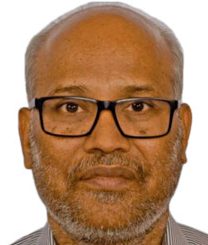
In May 2018, the Central Electricity Regulatory Commission (CERC) released a consultation paper on the terms and conditions of the tariff regulations for the next tariff period from April 1, 2019 to March 31, 2024. The new tariff regulations are aimed at providing direction to the power sector as per the existing economic and financial scenario. Given the sector’s dynamic environment, there is a need to revise the assumptions and factors, based on which the regulations will be framed. Therefore, the central regulator has suggested several changes in the tariff terms in line with the provisions of the Electricity Act, 2003 and the Tariff Policy, 2016, aimed at promoting competition and tariff rationalisation. The paper is open to feedback from stakeholders until July 15, 2018.
The CERC has been specifying the terms and conditions of tariff determination for interstate generation and transmission since 1998. In the past, it has issued multi-year tariff regulations for four tariff periods 2001-04, 2004-09, 2009-14 and 2014-19, and 2019-24 will be the fifth tariff period. The CERC currently regulates over 76 GW of generation capacity (which represented close to one-fourth of the total installed capacity, as of March 2017) in addition to interstate transmission systems.
Power Line presents the highlights of the consultation paper…
The guiding factors for sepcifying the terms and conditions for tariff determination are to ensure stable and affordable electricity prices; promote efficiency in the entire value chain to benefit end consumers; enable appropriate risk allocation based on commercial principles; encourage commercial contracts with clear risk allocation; define the responsibilities of each party as well as its rights and obligations; and ensure optimum utilisation of generation and transmission capacity and cost recovery.
Tariff design
Currently, the regulations follow a two-part tariff structure for thermal and hydro generation, a single-part tariff for interstate transmission and feed-in tariff (FiT) for renewable generation.
Thermal stations: The CERC paper has proposed to introduce a three-part tariff structure to replace the existing two-part tariff for thermal generation. The proposed design seeks to introduce a variable component in addition to the fixed and energy charges. It will provide an incremental return in addition to the guaranteed return as well as balance operations and maintenance (O&M) expenses. The variable component could be linked to the difference between electricity availability and despatch. Meanwhile, the fixed component could be linked to target availability, and fuel or energy charges to despatch.
This will be useful for coal-based stations that have been witnessing declining plant load factors (PLFs) in recent years, hovering at around 60 per cent, due to low demand. In fact, states have shied away from purchasing long-term power to avoid fixed cost liability and are resorting to short-term power purchase to meet the demand. The two-part tariff regime has worked well in the deficit scenario and now needs review.
For stations older than 25 years, the paper recommends a clear policy/regulatory decision, which includes the replacement of inefficient subcritical units, phasing out or renovation of old plants, and extension of useful life.
Hydropower stations: The paper states that the existing two-part structure for hydro stations is adequate. However, to address the issue of difficulty in despatching hydro power due to high energy charges (on account of the large capital cost), the fixed and variable charges need to be reformulated. The fixed component may include debt service obligations, interest on loan and risk-free return while the variable component may include incremental return above the guaranteed return, O&M expenses and interest on working capital.
Interstate transmission: In the case of interstate transmission, the paper proposes a two-part tariff, wherein the first part can be linked with access service (fixed component) and the second can be linked with the transmission service (variable component). The fixed component may be further linked to the evacuation system or computed on a normative basis based on aggregate transmission charges of the identified transmission system under the contract. The variable component may include yearly transmission charges based on the actual flow or despatch of electricity against long-term access.
Renewable energy generation: Given that the current FiT does not offer any advantage of economic efficiency, the paper recommends a two-part tariff structure comprising the fixed component (debt service obligations and depreciation) and the variable component (equal to the marginal cost including O&M expenses and return on equity). The fixed component can be the FiT and the variable component can be based on capacity augmentation such as storage, or back up supply tariff.
In the case of integration with thermal power plants, the paper suggests three alternatives. First, renewable energy may be supplied at the tariff stipulated for the contracted thermal capacity under the existing power purchase agreement (PPA). Second, the renewable tariff may be combined with the fixed and variable components of thermal generation for contracted capacity under the PPA. In this case, the operational norms of conventional capacity may need revision including higher target availability for fixed cost recovery (say, 2 per cent higher for every 10 per cent capacity addition) and higher PLF for incentive recovery. Third, the tariffs may be recovered separately for both thermal and renewable generation and operational norms for tariff recovery may also be specified separately.
Other parameters
Deviation from norms: The paper suggests exploring an incentive and disincentive mechanism for different levels of despatch and specifying the target despatch, thus expanding the scope of the existing regulations. Currently, some of the tied up capacity of distribution licensees remains undespatched over a large part of the year. Given that the CERC tariff acts as a ceiling, generating stations or transmission licensees can charge a lower tariff for this portion to create competition.
Components of tariff: Given that private generating stations have a mix of regulated, competitively tied and merchant capacity, the question is whether the annual fixed charges and energy charges are to be determined for the regulated capacity (as per Section 62 of the Electricity Act), or the entire capacity. The suggested approach is to determine tariff for the entire capacity and restrict tariff recovery to the extent of the PPA on a prorata basis. Meanwhile, the balance capacity will be merchant or tied up capacity under Section 63 (competitive bidding).
Optimum capacity utilisation: For coal-based generation, the paper suggests that flexibility may be provided to both the generation and distribution companies to revise their contracted capacity yearly based on the anticipated reduction in utilisation. The distribution licensee can recall this unutilised capacity in the subsequent year by paying a part of the fixed cost or debt service obligations. Such unutilised capacity could be aggregated and bid out in the market.
For hydro stations, the paper suggests extending the project life to 50 years from 35 years and the loan repayment period to 18-20 years from 10-12 years to moderate the upfront loading of the tariff. Another important suggestion relates to assigning the responsibility of hydro and pumped power stations at the regional level for balancing purposes. To this end, scheduling may have to be delinked from the requirements of the designated beneficiaries. Instead, power can be despatched to them through the banking facility so that there is flexibility in scheduling. Further, part of the fixed charge liability (10-20 per cent) may be apportioned to the regional beneficiaries as reliability charges. A similar suggestion has been made for gas-based generation whereby scheduling and despatch for these may be shifted to the regional level for balancing.
Capital cost: The paper suggests shifting away from approved investment as the reference cost to the benchmark cost for prudence check of the capital cost. The challenge is, however, the absence of credible benchmarking of technology and capital cost. For new projects, the fixed rate of return may be restricted to the base corresponding to the normative equity envisaged in the investment approval or the benchmark cost. The return on additional equity may be restricted to the weighted average of the interest rate of the loan portfolio, or the rate of risk-free return. Further, incentives for early completion and disincentives for slippage from scheduled commissioning can be introduced.
Renovation and modernisation (R&M): For transmission assets, the CERC may allow R&M for extension of useful life or permit special allowance for R&M. The latter provision will allow companies to meet the required expenses including R&M on the completion of 25/35 years of useful life of substations/transmission lines without the need for seeking resetting of the capital base.
Financial parameters
Depreciation: The paper suggests extending the useful life of the transmission assets and hydro stations to 50 years (from 35 years) and that of thermal assets to 35 years (from 25 years), and making relevant changes in the treatment of depreciation. Other options include continuing with the current approach of weighted average useful life in case of multi-unit plants; considering the additional expenditure during the end of life; reassessing life at the start of every tariff period, or additional capital expenditure, and reducing the rates, which will act as a ceiling. If the existing policy of charging depreciation is continued, the tariff policy provision that allows the developer to opt for a lower depreciation rate than the regulation notified ceiling rate will cause difficulty in setting the floor rate.
Debt-equity ratio: The capital cost for projects commissioned after April 1, 2019 is proposed to be financed through a debt-equity ratio of 70:30. In case the actual equity is over 30 per cent, the excess will be treated as the normative load, and if it is lower than 30 per cent, the actual equity will be considered for tariff determination. Going forward, the paper suggests modifying the normative debt-equity ratio to 80:20 for new plants that have not yet achieved financial closure.
Return on equity (RoE): Currently, the post-tax base rate is fixed at 15.5 per cent in addition to an incentive of 0.5 per cent for generation/transmission projects completed within the schedule. For storage-based hydro stations, an additional 1 per cent is allowed (16.5 per cent).
While the market dynamics favour the reduction of RoE owing to surplus capacity and low interest rates, the CERC believes that such reduction will have a negative impact on the existing equity, creating further financial stress on such projects. However, different RoE for new projects could be considered with different rates for generation and transmission projects.
Fuel
Gross calorific value (GCV): Energy charge constitutes about 60-70 per cent of the generation tariff. Therefore, the measurement of GCV of coal needs to be accurate to ensure the true representation of the coal consumption. The paper suggests specifying the normative GCV loss between “as billed” and “as received” at the generating station end and identifying losses to be booked to the coal supplier or railways. Similarly, the normative GCV loss between “as received” and “as fired” in generating stations needs to be specified. Further, there is a need to standardise the GCV computation method on an “as received” and “air-dry basis” for the procurement of coal from both domestic and international suppliers. For coal blending, the normative blending ratio may be specified separately for existing and new plants in consultation with the beneficiaries. For determining the landed fuel cost, either all cost components may be allowed as part of tariff or a list of standard components may be specified.
As per the current framework, generators opting for alternative fuel sources require prior consultation if their rate exceeds 30 per cent of the base energy charge rate or 20 per cent of the energy charge rate of the previous month. It is suggested that the procedure for sourcing of fuel from alternative sources, including the computation of the ceiling rate, should be stipulated in the new terms and conditions.
Operational norms
Currently, most thermal power plants are running at low PLFs, which has an adverse impact on the operational norms. Hence, the existing heat rate norms for new and existing generating stations need to be reviewed along with the need for margin. The heat rate norms will be over and above the heat rate guaranteed by the original equipment manufacturer based on actual performance data of the past five years.
At present, fixed charge recovery is linked to availability, which is specified at 85 per cent for all generating stations. The existing norms of annual plant availability need to be reviewed by considering fuel availability, coal procurement from alternative sources and reducing the period of fixed cost recovery from annual to monthly, quarterly or half-yearly.
For transmission, the availability factor (calculated on a monthly basis) is based on the weightage factor worked out for individual groups like transmission lines, transformers and reactors. The existing weightage factor method needs to be validated by considering the actual data while the procedure for the computation of availability also needs to be reviewed. Further, the incentive formula for high voltage direct current (HVDC) needs to be reviewed. Currently, the maximum incentive for an alternating current (AC) system is 1.27 per cent, and for an HVDC system it is 3.91 per cent. At present, there is no regulatory framework specifying the norms for transmission losses that may be considered. In the present scheduling framework, losses of 4.5-5 per cent are considered for the interstate system and 4-4.5 per cent for the intra-state system.
There is a need to review linking of incentives to fixed charges given the variation in such charges over the useful life and vintage of the asset. Different incentives may be provided for off-peak and peak periods for thermal and hydro stations and different mechanisms may be devised for storage-and pondage-type hydro stations. A system of differential annual fixed charge (AFC) recovery linked to peak and off-peak periods is recommended. Under this, the weightage factors can be calculated by considering the recovery of 80 per cent AFC on the declaration of 80 per cent availability during the year, and the remaining 20 per cent on achieving 95 per cent availability during the peak period (four months). Further, a higher peak price (25 per cent higher than off-peak price) is recommended.
Tariff mechanism for pollution control systems: The paper suggests provisions for the recovery of additional capex being incurred by generation companies on the installation of emission control equipment to meet the environment ministry’s revised norms. The Central Electricity Authority is expected to calculate the benchmark costs for these installations.
Energy storage systems may be combined with transmission and generation projects. Storage facilities as part of interstate transmission will be subject to regulatory approval while storage facilities for generating capacity will require the procurer’s approval.
Conclusion
In the coming months, stakeholders are expected to share their feedback and help in the formulation of the final regulations, which are expected to be notified by the end of 2018. The market conditions have changed considerably since the previous tariff regulations. The CERC aims to address the new requirements of the emerging environments with practical solutions. Overall, the tariff regulations are expected to encourage investments in the sector while keeping the electricity prices affordable for end consumers.
Swarna Kesavan



